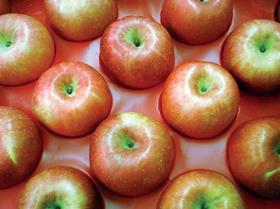
The Korean apple crop is forecast to come in at 565,000 tonnes, down 2.8 per cent on the prior year, according to the USDA’s Global Agriculture Information Network (GAIN) report.
In the year to June 2018, the farming area is expected to increase slightly, while yield per hectare will drop due to hail damage in apple producing regions in June.
While production is set to drop, so too is Korea’s per capita apple consumption. Apples remain the second-most consumed fruit, after citrus, with per capita consumption expected to drop 10.9 per cent in 2017/18 due to lower production.
The country primarily produces Fuji apples, with apples accounting for 21.6 per cent of total fruit production in Korea in 2015, according to the GAIN report.
Size also matters to Korean consumers, with larger apples used for gifting during the Lunar New Year and Chusoek holiday seasons.
“According to a recent survey by the Korea Rural Economic Institute (KREI), most Korean consumers prefer to eat medium and small apples at home, while they prefer to buy big apples during the Korean holiday seasons as a gift set,” the report stated. “As a result of a rapidly increasing number of one member households over the past several years, the demand for medium- and small-size apples increased. This trend is expected to continue in coming years.
“Local grocery distributers also contend that big-size apples will continue to be distributed mainly during the holiday seasons as a gift set, while the demand for medium- and small- size apples will increase for day-to-day consumption at home.”
In terms of trade, Korea exports around 1 per cent of its total production, with Taiwan taking 60 per cent of the export crop (2,389 tonnes), followed by Hong Kong and Singapore.
“Korean apple exports to Taiwan peaked in 2010 around 7,300 tonnes, but dropped to 2,000 tonnes in 2011 due to the detection of higher level of chemical residue levels during import inspections,” the report said. “As a result of high residue level findings, the Taiwanese quarantine authority temporarily increased its spot inspection rate by 20 percent beginning in 2011, but returned to the normal rate in 2015.”
No fresh apples can be imported into Korea, however, around 10,000 tonnes of processed apples are imported annually for apple juice and dried fruit.
The US, Japan, New Zealand, China and Italy are all at various stages of applying for access to Korea for fresh apples.



